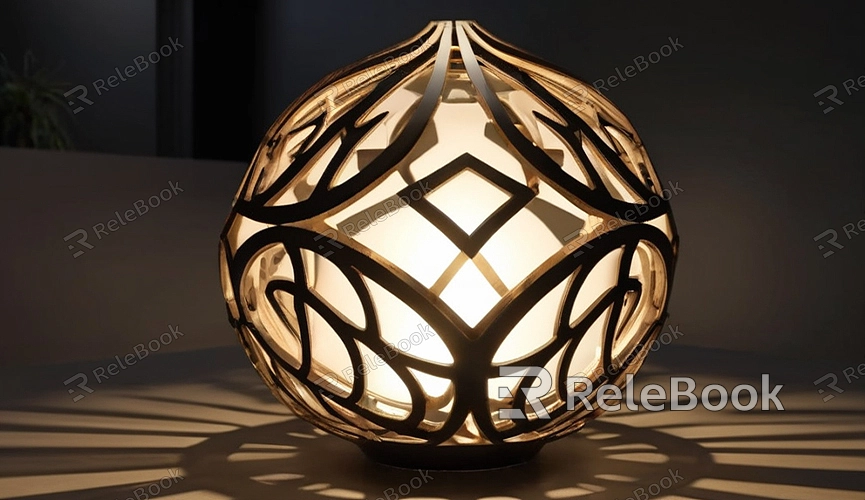What Are Polygons in 3D Modeling?
In the world of 3D modeling, polygons are the fundamental building blocks of all 3D models. Whether you’re creating characters, buildings, vehicles, or other virtual objects, nearly all 3D models are composed of thousands of polygons. So, what exactly is a polygon? How does it function in 3D modeling? This article will delve into these questions and provide practical tips for effectively using polygons in your modeling projects.
Definition of Polygons
Simply put, a polygon is a geometric shape formed by connecting multiple points (vertices), typically in the form of triangles or quadrilaterals. In 3D modeling, the most common type of polygon is the triangle, as it is the simplest and most stable. In computer graphics, all 3D models are ultimately converted into triangle meshes for rendering, even if the original model consists of quadrilaterals or more complex shapes.3

Each polygon has three basic components:
1. Vertex: The corner points of the polygon.
2. Edge: The line segments connecting the vertices.
3. Face: The flat surface enclosed by the vertices and edges.
These elements collectively define the shape and outline of an object. When multiple polygons are combined, they form a complete 3D model.
The Role of Polygons in 3D Modeling
Polygons serve as the building units of 3D models, much like bricks in a building. During modeling, artists arrange and adjust the vertices, edges, and faces of polygons to shape the desired 3D form. The more polygons used, the greater the detail and complexity of the model.
However, while increasing the polygon count can enhance model accuracy, it also demands more from the computer’s processing capabilities. A model with a high polygon count will increase rendering time and may negatively impact real-time rendering performance. Therefore, 3D modelers often need to strike a balance between the model’s detail and the number of polygons, a practice known as polygon optimization.
Triangles vs. Quads
In 3D modeling, triangles and quadrilaterals are the most commonly used types of polygons. While triangles are considered the basic unit of computer graphics, modelers often prefer using quadrilaterals during the modeling process. The reason is simple: quadrilaterals are easier to work with and deform more naturally during animation. However, when rendering, quadrilaterals are automatically converted into triangles.
As a result, most 3D modelers aim to keep their models primarily composed of quads, especially when creating character models that require deformation. This approach helps facilitate subdivision, allowing models to exhibit smoother surfaces while maintaining a lower polygon count.
The Polygon Modeling Process
The 3D modeling process typically begins with a simple base geometric shape, such as a cube, cylinder, or plane. Modelers gradually transform these shapes into more complex models by editing the vertices, edges, and faces. This process involves stretching, scaling, rotating, and cutting polygons to shape the final 3D object.
Some modeling techniques rely on manual editing of polygons, while others utilize procedural generation, such as procedural modeling or scanning 3D contours of objects. In complex models, manually editing polygons offers modelers greater control and freedom to ensure every detail meets their vision.
The Relationship Between Polygon Count and Performance
In 3D modeling, the number of polygons directly correlates with the rendering performance of the model. Models with fewer polygons, often referred to as low-polygon models, are suitable for real-time rendering scenarios such as games and virtual reality. Low-polygon models render quickly and have lower hardware requirements, but they offer limited detail.
In contrast, high-polygon models are typically used for film effects or high-quality rendering. These models can showcase much more detail but also increase the burden on the computer, resulting in longer rendering times. Thus, when creating 3D models, modelers must decide on the polygon count based on the project’s needs. A skilled modeler finds a balance between precision and performance.
How to Optimize Polygon Count
When working on 3D modeling, optimizing the polygon count is a crucial step. Here are some common optimization techniques:
- Delete Unnecessary Polygons: Inspect every corner of the model and remove polygons that do not contribute to the final appearance.
- Use Normal Maps: Normal maps can simulate the surface details of high-polygon models without actually increasing the polygon count.
- Allocate Polygons Wisely: Concentrate polygons in areas that require high detail (like faces or joints) while reducing the count in less important areas (like flat surfaces).
These methods not only maintain the high quality of the model but also improve rendering efficiency, which is especially important in scenarios demanding real-time performance, such as games and virtual reality.
Recommended Resources for Enhancing Modeling Efficiency
To create outstanding 3D models, the quality of materials and textures is equally essential. If you need high-quality 3D textures and HDRIs while creating models and virtual scenes, you can download them for free from [Relebook](https://textures.relebook.com). If you're looking for exquisite 3D models, visit [Relebook](https://3dmodels.relebook.com), where you'll find a wide selection of high-quality 3D resources to help you quickly build complex scenes and enhance the overall quality of your work.
Polygons are the core building blocks of 3D modeling. Understanding their role and how to use them effectively is a fundamental skill for becoming a proficient modeler. Whether you choose triangles or quads, controlling the quantity and distribution of polygons is key to optimizing performance while maintaining high-quality models. By using polygons wisely and incorporating high-quality textures and resources, you can create stunning virtual works in Blender or other 3D software.

